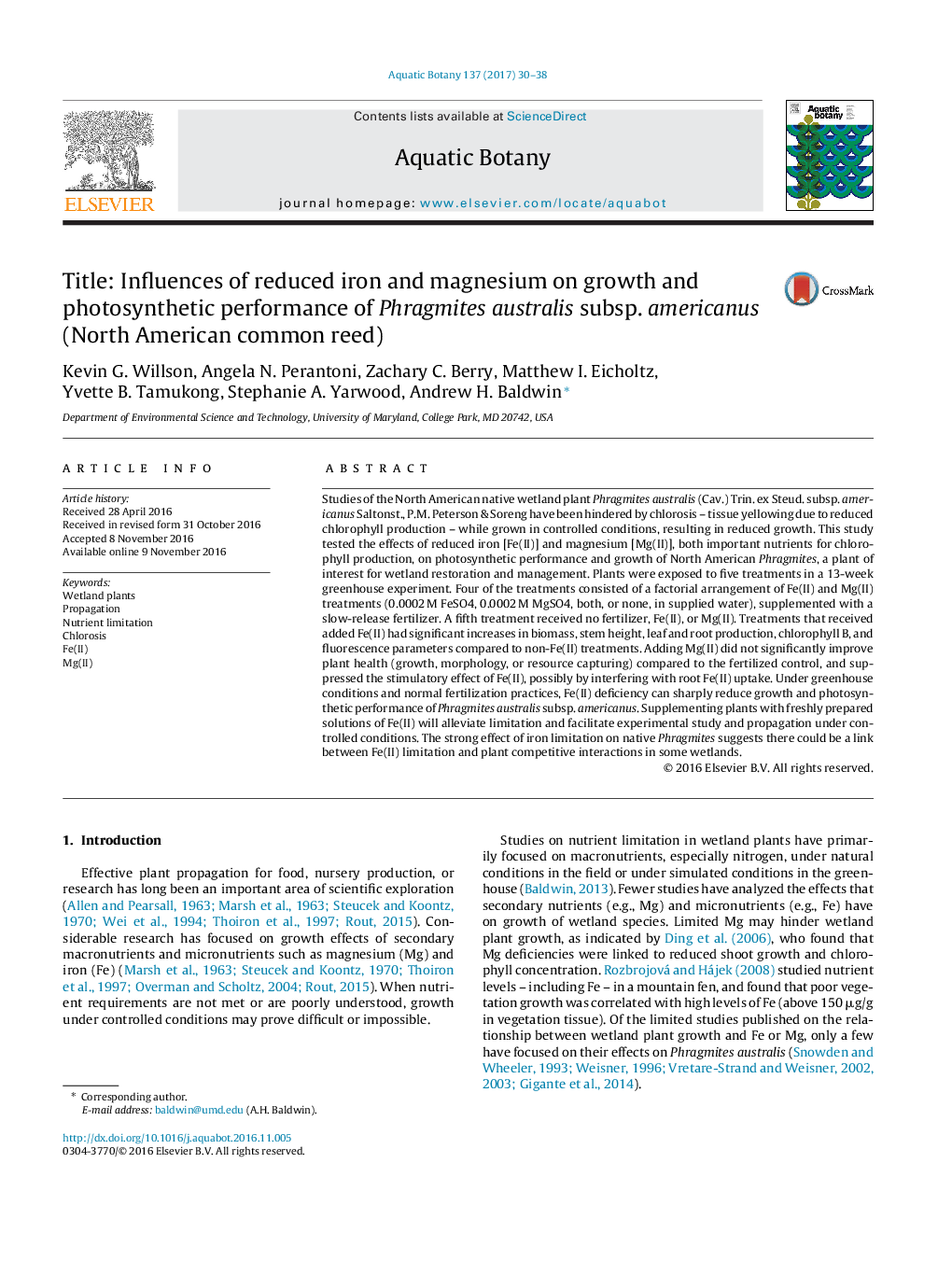| Article ID | Journal | Published Year | Pages | File Type |
|---|---|---|---|---|
| 5764039 | Aquatic Botany | 2017 | 9 Pages |
â¢North American common reed (Phragmites australis subsp. americanus) is a plant of interest for wetland restoration and management, but propagation under controlled conditions has been hindered by chlorosis and slow growth.â¢In a greenhouse experiment, addition of Fe(II) (reduced iron) alleviated chlorosis and significantly increased biomass, stem height, leaf and root production, chlorophyll B, and fluorescence parameters.â¢Supplementing with Mg(II) (reduced magnesium) did not improve plant health measures and suppressed the stimulatory effect of Fe(II).
Studies of the North American native wetland plant Phragmites australis (Cav.) Trin. ex Steud. subsp. americanus Saltonst., P.M. Peterson & Soreng have been hindered by chlorosis - tissue yellowing due to reduced chlorophyll production - while grown in controlled conditions, resulting in reduced growth. This study tested the effects of reduced iron [Fe(II)] and magnesium [Mg(II)], both important nutrients for chlorophyll production, on photosynthetic performance and growth of North American Phragmites, a plant of interest for wetland restoration and management. Plants were exposed to five treatments in a 13-week greenhouse experiment. Four of the treatments consisted of a factorial arrangement of Fe(II) and Mg(II) treatments (0.0002Â M FeSO4, 0.0002Â M MgSO4, both, or none, in supplied water), supplemented with a slow-release fertilizer. A fifth treatment received no fertilizer, Fe(II), or Mg(II). Treatments that received added Fe(II) had significant increases in biomass, stem height, leaf and root production, chlorophyll B, and fluorescence parameters compared to non-Fe(II) treatments. Adding Mg(II) did not significantly improve plant health (growth, morphology, or resource capturing) compared to the fertilized control, and suppressed the stimulatory effect of Fe(II), possibly by interfering with root Fe(II) uptake. Under greenhouse conditions and normal fertilization practices, Fe(II) deficiency can sharply reduce growth and photosynthetic performance of Phragmites australis subsp. americanus. Supplementing plants with freshly prepared solutions of Fe(II) will alleviate limitation and facilitate experimental study and propagation under controlled conditions. The strong effect of iron limitation on native Phragmites suggests there could be a link between Fe(II) limitation and plant competitive interactions in some wetlands.
